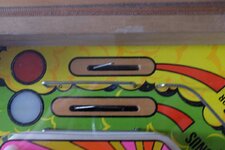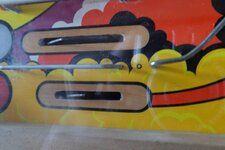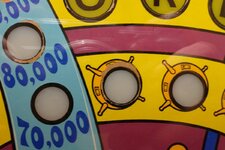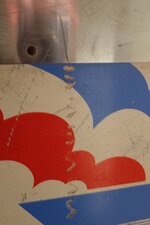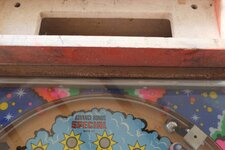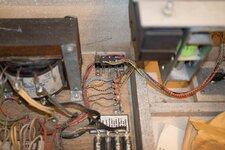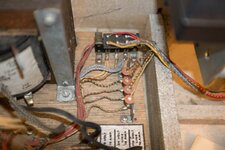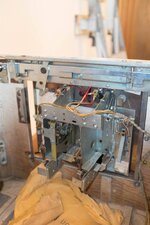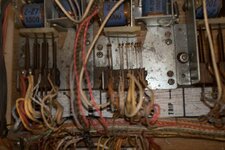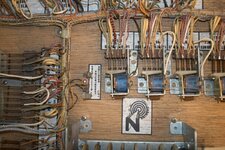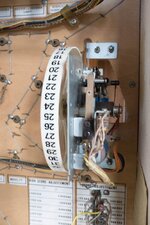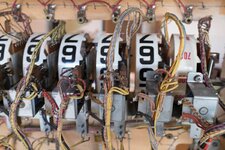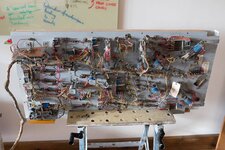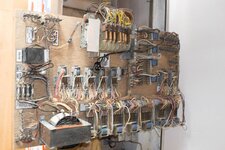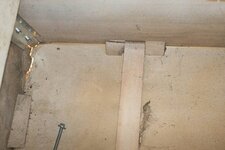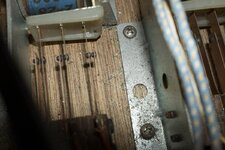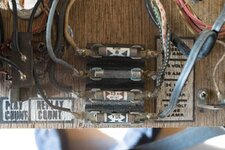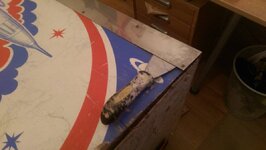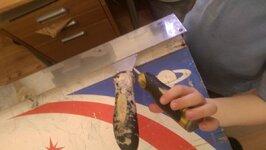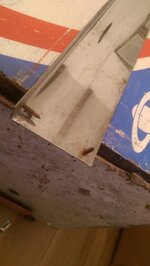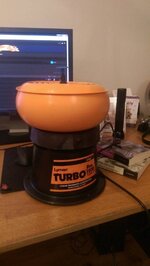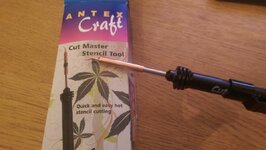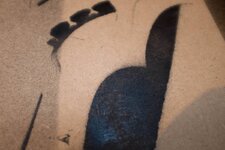I've fancied having a go at restoring an EM for a while now, and recently picked up a 1976 Zaccaria Moon Flight, which is ideal for the project that I wanted. Here's a list of the problems I've found so far (I've not 100% decided whether I'll tackle all of these or not yet):
- There are a lot of dings to the cabinet, as you might expect from a 38 year old machine.
- The left side of the case has split into three parts. Not sure if this is repairable or whether a new panel will be needed.
- The right side of the cabinet is not so bad, just a few scrapes.
- The rear of the case has seen better days and will need replacing.
- The bits of wood around the top which the backbox slots onto have seen better days.
- The backbox has a few chunks of wood missing.
- The translite is in quite nice condition. It has a couple of scrapes but hopefully these are fixable.
- The playfield is in great condition for the age. there are a few small areas of wear. I've not decided whether to try and fix these or just leave as is yet.
- I can see a couple of the rollover switches have broken and will need repairing or replacing.
- The legs are pitted with rust and will need sorting.
- The coin door is in quite nice condition, maybe a good clean will do to fix that up. Similarly the shooter handle.
- The metal components around the top of the glass need cleaning/rust removal.
- It needs leg bolts, back box bolts, and a new power cable / power socket.
....and that 's it so far. I've yet to look under the playfield as the keys have gone walk about. So I'll be breaking the lock at some point soon to have a look underneath - no doubt plenty to do under there - if nothing else, a very good clean and polish of everything.
Here's some pics:
The rear side of the translite - just a couple of small scratches to address, but generally very nice.
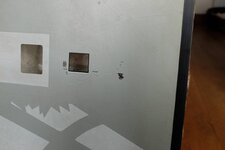
Front of the translite, overall looks pretty good
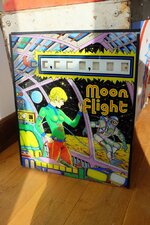
Close up of the scratch on the translite, hopefully repairable
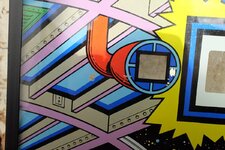
Rear of the case: seen far better days!
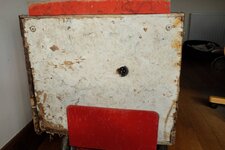
Will need a new power socket, this one is badly damaged
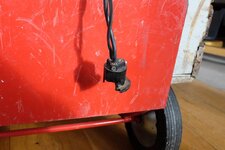
A close up of that rear panel damage.
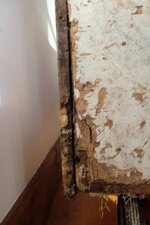
The left side of the case: the panel has split into three bits. Looks like it's made of mdf too, which was a surprise for me. The webbing in the paint might be tricky to achieve if I decide to repaint.
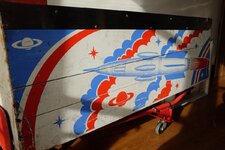
The centre bit comes away, so I can glimpse inside.
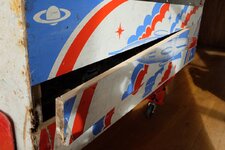
The bit that the backbox slots onto came away in my hand when moving it, so that'll need replacing.
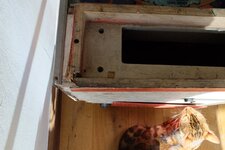
The playfield is in great condition for the age.
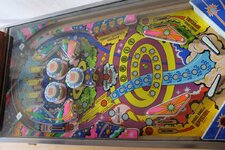
Just small bits of wear around some inserts
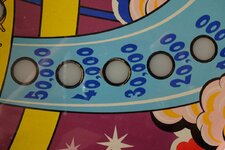
Not sure whether I'll try and fix this or just leave it.
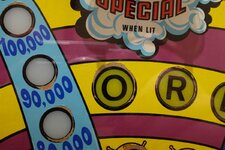
A bit of wear to sort out here
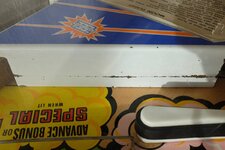
A bit of the "1000! has worn off on this popbumper which will need sorting.
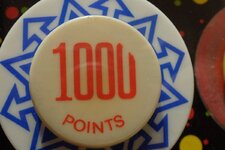
The coin door and shooter are OK, maybe just needs a good clean.
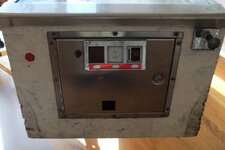
The right side of the case is comparatively OK, a few scrapes and a bit of structural damage towards the rear.
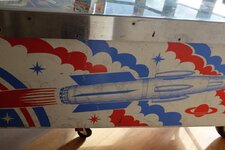
The backbox needs a bit of work on these dinks.
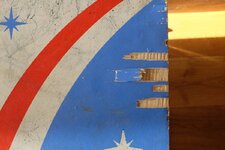
And these ones too....
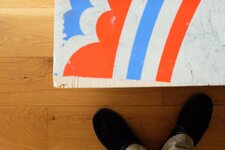
This side too...
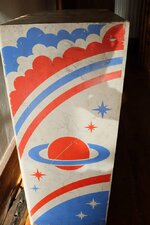
And the top of the backbox could do with sorting as well.
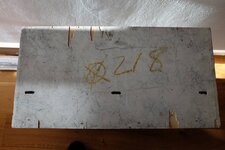
The legs are rusty, so will need sorting.
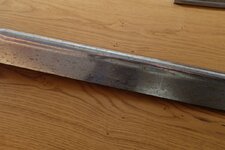
A close up of the leg rust. They're all like this.
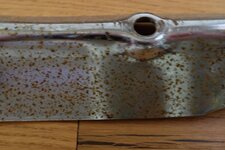
A couple of these bits of wire that stick out through the playfield on top of switches have snapped.
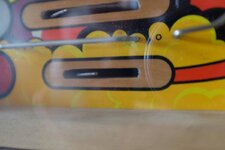
And this one too...
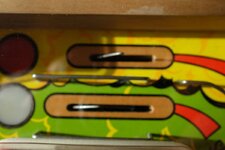
So that's about it for now. I need to get the case opened and have a look inside, then decide what to tackle first!
- There are a lot of dings to the cabinet, as you might expect from a 38 year old machine.
- The left side of the case has split into three parts. Not sure if this is repairable or whether a new panel will be needed.
- The right side of the cabinet is not so bad, just a few scrapes.
- The rear of the case has seen better days and will need replacing.
- The bits of wood around the top which the backbox slots onto have seen better days.
- The backbox has a few chunks of wood missing.
- The translite is in quite nice condition. It has a couple of scrapes but hopefully these are fixable.
- The playfield is in great condition for the age. there are a few small areas of wear. I've not decided whether to try and fix these or just leave as is yet.
- I can see a couple of the rollover switches have broken and will need repairing or replacing.
- The legs are pitted with rust and will need sorting.
- The coin door is in quite nice condition, maybe a good clean will do to fix that up. Similarly the shooter handle.
- The metal components around the top of the glass need cleaning/rust removal.
- It needs leg bolts, back box bolts, and a new power cable / power socket.
....and that 's it so far. I've yet to look under the playfield as the keys have gone walk about. So I'll be breaking the lock at some point soon to have a look underneath - no doubt plenty to do under there - if nothing else, a very good clean and polish of everything.
Here's some pics:
The rear side of the translite - just a couple of small scratches to address, but generally very nice.

Front of the translite, overall looks pretty good

Close up of the scratch on the translite, hopefully repairable

Rear of the case: seen far better days!

Will need a new power socket, this one is badly damaged

A close up of that rear panel damage.

The left side of the case: the panel has split into three bits. Looks like it's made of mdf too, which was a surprise for me. The webbing in the paint might be tricky to achieve if I decide to repaint.

The centre bit comes away, so I can glimpse inside.

The bit that the backbox slots onto came away in my hand when moving it, so that'll need replacing.

The playfield is in great condition for the age.

Just small bits of wear around some inserts

Not sure whether I'll try and fix this or just leave it.

A bit of wear to sort out here

A bit of the "1000! has worn off on this popbumper which will need sorting.

The coin door and shooter are OK, maybe just needs a good clean.

The right side of the case is comparatively OK, a few scrapes and a bit of structural damage towards the rear.

The backbox needs a bit of work on these dinks.

And these ones too....

This side too...

And the top of the backbox could do with sorting as well.

The legs are rusty, so will need sorting.

A close up of the leg rust. They're all like this.

A couple of these bits of wire that stick out through the playfield on top of switches have snapped.

And this one too...

So that's about it for now. I need to get the case opened and have a look inside, then decide what to tackle first!

